
Gleisdreieck: from a desert to the preference in Berlin
23 de July de 2016
Free wifi in Berlin’s transport system
27 de July de 2016Today I will tell you about my visit to the Bodensee region, also known as Lake Constance in southern Germany, which is the natural border with Switzerland and a little piece of Austria. It was a fantastic trip, where I was able to visit amazing places and meet wonderful people. I went through cities like Ravensburg, Wangen, Lindau, Bregenz and the small Amtzell, where my adventure began! And as I have so many things to tell and have been a while away from the Blog, I will write the story of the three days I stayed in this region.
The choice to stay in Amtzell was not by chance, because it was in this charming village that I stayed in the house of one of my best friends: Corinna! I was very pleased with the invitation, as well as with the chance to see her again, so I could experience how the routine of the Germans in this rather traditional part of Germany is. As I arrived at night and was already exhausted, we preferred to rest and explore the area in the next morning when we took the car and went to Wangen.
Wangen: local tradition
We left towards the town of Wangen in the morning because we were invited by Jürgen, another friend of us, to taste the traditional “brunch”. The town is small, with just over 25 thousand inhabitants. The first Wangen records dating back to 815 A.D. by the name of “Wangun” in a document of a monastery.
We walked the charming streets of the city, with very well preserved buildings. The city was destroyed by fire three times in the years 1539, 1793 and 1858 but it was always rebuilt and kept the architectural elements ranging from the early Middle Ages until the end of the Baroque era.
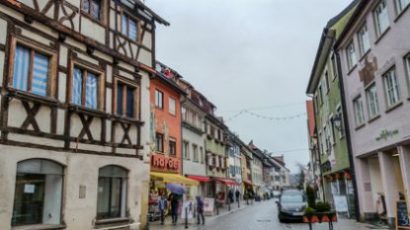

After a short walk, we arrive at Fidelisbäck. This is a traditional bakery in the area, and when I say “traditional” it can be taken literally, since the foundation of the establishment date of the year 1505! That’s right, just five years after, for example, the arrival of the Portuguese in Brazil. The place is very nice and has great options for brunch on Sundays.
We found our friend and the table he was sitting at, I asked what would be the most traditional dish to taste, in order to feel like a local. Jürgen did not think twice and called for a basket with typical breads of the region, pork slice called here Leberkäse, and half a liter of Meckatzer (a local beer). He called the waitress and said: “Wir möchten eine Scheibe heißen leberkäse und ein Bier kühles Meckatzer.”
The food was very good! And I found curious the fact of having beer for breakfast, some people even asked for the beer at room temperature. Another thing I admired in the place is that people share tables. We were three of us at a table when an elderly couple arrived later and asked to sit together. Not only they were very kind, but also took part of the conversation. The room had a very familiar atmosphere, very nice and relaxed. I recommend this place, not only for the history of more than five centuries, but also the quality of service.
After this morning so nice, we had another commitment: lunch at Corinna’s grandmother. Very cool was the chance to meet a typical house in the area, located in a small village between Wangen and Amtzell. Once there, her grandmother and great-aunt were sitting waiting for our arrival. We took her some flowers, and in turn, she gave us a tight hug, that was the best reception we could have had. We talked for a long time, I heard stories of when her grandchildren were still small. The dialect of the region was a little hard for me to understand all the words, but in the overall context I could communicate quite well!
For lunch, the lady had prepared a typical dish called Spätzle, which translated literally means “sparrow”. This is a similar pasta to the eastern ones, widely used in southern Germany, western Austria, Switzerland, Alsace and, outside Europe, German immigration regions, such as in southern Brazil. In certain cities in northern Italy, it’s known for Troffi.
It was really a fantastic experience and a great opportunity to see how a family lives in this southern region. We said goodbye and continued our journey!
Our next destination was Ravensburg, where we spent the night and returned during the day to get to know the largest city in the region.
Ravensburg: city of towers
Ravensburg is a commercial and industrial city very prosperous in this region, which is near the Bodensee. Unemployment is relatively low, and the big cities nearby are Munich, Stuttgart and Zurich (about two-hour drive is which city is). Ulm, Konstanz and Bregenz are smaller cities, which can be accessed by car, bus or train.
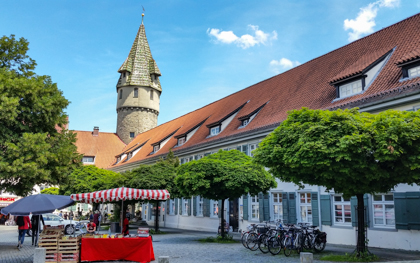
The city is famous for its many towers around the city. Not be such a tourist destination, you realize perfectly how the local life. Ravensburg is also well known for its gaming factory.
When we arrived we went straight to QMUH, a local restaurant with great choices of meat, burgers and Flammkuchen (a kind of pizza very common in the region). The environment is very nice and I recommend to do reservation, as the hall is full.
The next day we visited the old, very lively and busy center. I could see many children who had just left school, sitting in the square and elderly people enjoying the day in cafes. A quiet and dignified peace in a country town!

One of the things I liked to do in Ravensburg was going to Philosophenweg, a small street that leads to a lookout point from where you can observe the entire city and still meet the first tower built in the city. From the top you can see the Bodensee on the horizon.
We chose to have a picnic at the top of the hill, take cheeses, breads, salamis typical of the region and a bottle of wine I had bought in Colmar, France, days before when he was in Freiburg in the Black Forest region. While we took advantage the beautiful view and our banquet, several local interacted with us and liked the idea of doing something so relaxed there.
That same night we were watching a recital of poetry, something very common in Germany. Much appreciated by the locals, the place was packed and the audience very interested in our texts. It was quite interesting to participate in this event. Later we enter into an Irish Pub frequented by locals, but we didn’t stay longer, because the next day we would finally go to the Bodensee!
Lindau tranquility and incredible beauty
Lindau is a beautiful city that is located on an island on the banks of the Bodensee, already in the state of Bavaria. The first mention of Lindau in history was documented in 882 by a monk of St. Gallen, Switzerland, stating that Adalbert of Raetia had founded a convent on the island. However, the remains of a Roman settlement suggest that there were people in the region since the first century after Christ.
Lindau is one of the most popular tourist cities in southern Germany. The city gets most of its tourists in the spring and summer seasons and is famous for its architecture and the possibility of practicing outdoor activities such as cycling, sailing, hiking, swimming and camping, which are also very popular here.
We walked the city streets just to enjoy the buildings and the beautiful paintings that adorn the houses. Very friendly and photogenic, Lindau entered the list of my favorite cities in Germany. We stopped for coffee and eat a pie, before walking along the lakeshore.
Even looking to the lake shore is impressive, from where one can see the mountains on the horizon and, during the winter, when covered with snow, are even more beautiful. We walked slowly, until the time of setting of the sun when we were surprised by a splendid sky full of colors. A gift from nature to us, we were so unpretentious. The lake is possible to see the Swiss and Austrian lands. For geography lovers, it is very interesting to be near the border of three countries at the same time.
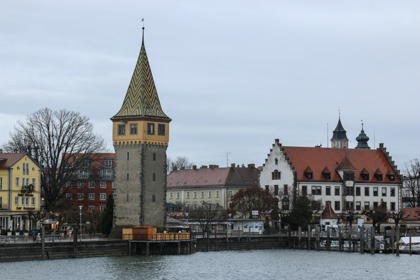

On the way back home, it was night and my friend explained about some common traffic rules in Germany, mainly in the south: from 22h, cars must to reduce speed to 30 km/h when they are passing through the villages or center of cities, not to disturb the sleep of the residents. This measure is called Lärmschutz, a “protection against noise”. I found great idea, a rule that values the quality of life.
The roads connecting these cities and towns have very sharp bends and therefore attention is necessary when driving. The landscapes in which we are really very beautiful and must be indeed a privilege to live here. We returned home because I had to say goodbye to the parents of Corinna.
On the third day I left for another region of Germany, but before that still needed to know Bregenz, a city on the border, which belongs to Austria.
Bregenz: climbing high
We woke up early the next day, because we wanted to make the most. Our destination was Bregenz, capital of Vorarlberg, the westernmost federal state of Austria. The city is located on the eastern shore of Lake Constance, the third largest freshwater lake in Central Europe, between Switzerland and Germany.
The city is especially famous for the annual festival of summer music: the Bregenzer Festspiele. As we had not much time in the city, we took the opportunity to visit its highest point, the Pfänder. To reach the top, we use the lift (Pfänderbahn) that every second was revealing a more beautiful landscape than the last. On this day it had snowed, which made it more charming yet.
The park offers several attractions such as ski track, a mini zoo with mountain animals, hiking options and a great restaurant called Pfänderdohle, where you can taste the local cuisine. For dessert, I tasted one of the best Apfelstrüdel have ever eaten in my life!
The panoramic view is breathtaking. The Bodensee below, the fresh air of the region and all tranquility, were things that I liked in this park. The Austrian dialect of the region also caught my attention and, even though we were only a few kilometers away from Germany, it was possible to notice the difference. So if you are going up the mountains and hear a “Servus!”, be not surprised, because they’re just wishing “good morning” or saying “hello”!

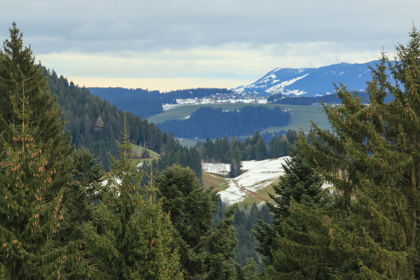
Soon after this wonderful ride, I said goodbye to Corinna and thanked immensely for the three days we could have been together and the experiences we shared! My next train goes to Bavaria, destinations Nuremberg and the charming Bamberg!
Would you like to visit this area? Talk to the staff of Go Easy Berlin! We have partnership with tourism companies in the region and we offer excellent options with local guides who speak English, Spanish and Portuguese. Discover this part of Germany and share with us your experience!
See you soon!
Dimitris.




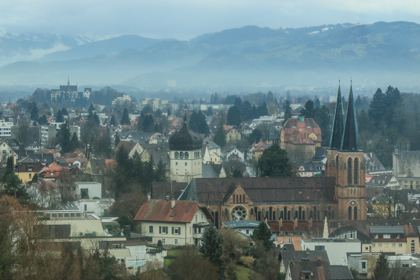
1 Comment
beautiful places!